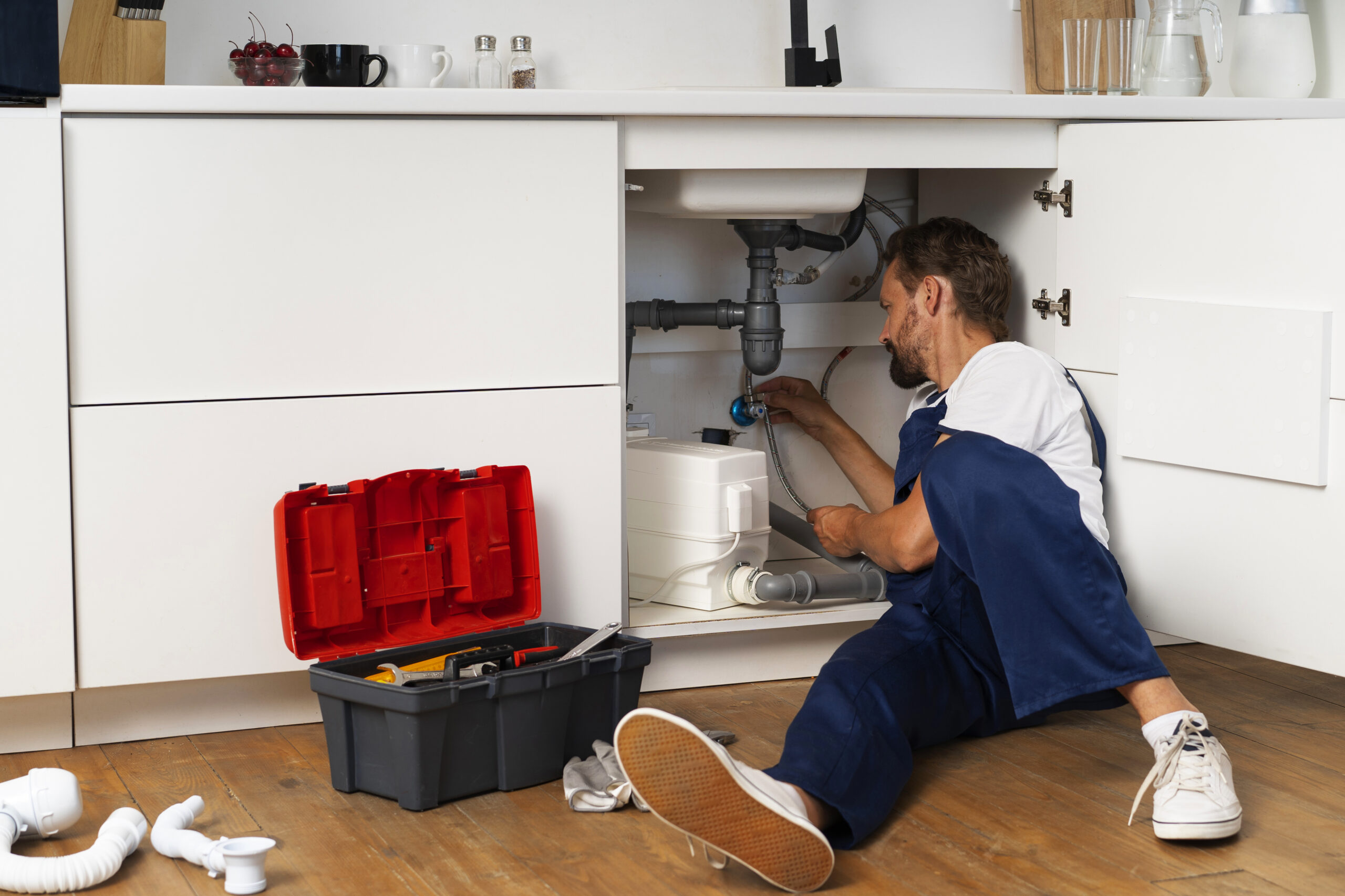Fixing a leaky faucet can be a straightforward DIY project. Here’s a step-by-step guide to help you:
Tools and Materials You May Need:
- Adjustable wrench or pliers
- Screwdrivers (flathead and Phillips)
- Replacement parts (such as O-rings, washers, or cartridges)
- Plumber’s tape
- Vinegar and a small brush (for cleaning)
Steps to Fix a Leaky Faucet:
- Turn Off the Water Supply:
Locate the shutoff valves under the sink. Turn them clockwise to close them.
If you can’t find the valves or they’re not working, turn off the main water supply to your home.
Open the Faucet:
Turn the faucet handle on to release any remaining water and relieve pressure.
Plug the Drain:
Use a sink plug or a rag to cover the drain. This prevents small parts from falling down the drain.
Disassemble the Faucet:
-
- Remove the handle by unscrewing the screw (usually located behind a decorative cap). You may need to pry off the cap to access the screw.
- Depending on your faucet type, you may need to remove additional parts such as the escutcheon or bonnet.
Inspect the Parts:
-
- Compression Faucet: Look for worn-out washers or O-rings. Replace them if they appear damaged.
- Ball-Type Faucet: Check the cam assembly, ball, and springs. These often need replacing if they’re worn out.
- Cartridge Faucet: Remove the cartridge and check for damage. Replacing the cartridge usually solves the problem.
- Ceramic-Disk Faucet: Check for damaged ceramic disks. Replacement might be needed.
Clean the Components:
-
- Soak parts in a vinegar solution to remove any mineral deposits or debris. Use a small brush if needed.
- Rinse and dry the parts thoroughly before reassembling.
Replace Damaged Parts:
-
- Purchase a repair kit or replacement parts specific to your faucet model. Follow the instructions to replace any damaged components.
Reassemble the Faucet:
-
- Put the faucet back together in the reverse order of disassembly. Ensure all parts are securely tightened but not overly tightened.
Turn On the Water Supply:
-
- Open the shutoff valves under the sink and turn the faucet handle on to check for leaks.
- Let the water run for a minute to ensure everything is functioning correctly.
Test for Leaks:
-
- Check around the faucet and handle for any leaks. If you notice any, tighten connections or recheck parts.
If you’ve followed these steps and the faucet is still leaking, or if the problem seems more complex, it might be best to consult a professional plumber.


